Editor’s Note: This is the second installment of a series looking at the newest iteration of the proposed Winsor Avenue solar farm. Look for part three in next week’s edition. The series is expected to conclude following the Nov. 2 continuation of the Zoning Board special use permit hearing.
This item is available in full to subscribers.
We have recently launched a new and improved website. To continue reading, you will need to either log into your subscriber account, or purchase a new subscription.
If you are a current print subscriber, you can set up a free website account by clicking here.
Otherwise, click here to view your options for subscribing.
Please log in to continue |
|

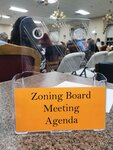
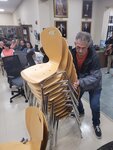
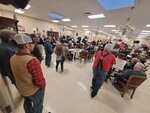
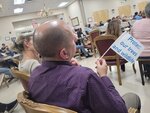
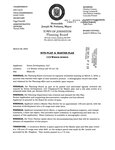
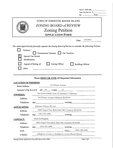
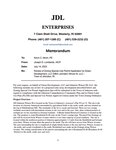
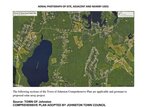
Editor’s Note: This is the second installment of a series looking at the newest iteration of the proposed Winsor Avenue solar farm. Look for part three in next week’s edition. The series is expected to conclude following the Nov. 2 continuation of the Zoning Board special use permit hearing.
State zoning laws define a structure. Do solar panels qualify? How about more than 46,000 solar panels?
Solar field developers pitching an industrial solar farm to cover approximately 160 acres of mostly forested land in a residentially zoned Johnston neighborhood argue their solar panels don’t fit the definition of a structure.
According to the Rhode Island zoning laws, a “structure” is defined as “a combination of materials to form a construction for use, occupancy, or ornamentation, whether installed on, above, or below the surface of land or water.”
And Johnston’s town zoning laws clearly define a “building.”
During a public hearing on Sept. 28, Stop Johnston Solar Attorney Matt Landry read an excerpt directly from the Johnston Zoning Ordinance.
“A ‘building’ is defined as any structure used or intended for supporting or sheltering any use or occupants,” Landry asked Joseph D. Lombardo, president of JDL Enterprises, a witness for Cranston-based Green Development, the company requesting a special use permit from the Johnston Zoning Board. “Would you agree with that?”
“Without looking at it, I can’t agree with it … But I’ll take your word for it,” Lombardo replied.
“And the definition of a building … refers to a structure?” Landry continued his line of questioning, pushing hard for a straight answer.
Green tried to build a slightly larger version of the proposed solar project but lost their bid before the town zoning officials in April 2022. They’re back before the board with a plan they argue is much smaller than their previous pitch.
The developer argues their fresh 19MW proposal (reduced by 5 MW from their previous 24MW proposal) is a “20% reduction in overall panel surface area.”
Landry, however, argues the project’s total site coverage — the proposed site, zoned for residential use, contains agricultural fields, a historic farmstead, a Rhode Island Historical Cemetery and isolated pockets of wetland — will actually be closer to a mere 5% reduction in project scope from the rejected application.
Around 160 forested acres have been targeted by Green Development for clear-cutting and the eventual installation of nearly 50,000 solar panels at 118 Winsor Ave. (AP 59, Lot 15) in northwest Johnston, about a half-mile from the Smithfield and Scituate town borders. The company presented several witnesses at the first half of the Sept. 28 public hearing (the hearing is expected to continue and conclude on Nov. 2), held in the Johnston Senior Center before a near-capacity crowd.
Structured Argument
“Do you know what the definition of a structure is under the state (Zoning) Enabling Act?” Landry asked Lombardo.
“I do not,” Lombardo answered.
“Would you agree that there are several components that comprise or make up this solar facility?” Landry asked.
“Yes, that’s been described to us,” Lombardo replied.
“Fencing, racking system, panels, things of that nature … and the whole point of bringing all those materials together is to create a solar facility,” Landry stated.
“Absolutely,” Lombardo shot back.
“I’m going to read to you what the Johnston Zoning Ordinance’s definition of a structure is — that’s also in line with what the Enabling Act is,” Landry told the witness. “It’s a combination of materials to form a construction for a use. Is it your testimony that this project does not satisfy the definition of a structure?”
Lombardo paused. He spoke slowly and carefully.
“I would say, that it doesn’t meet it in a typical sense that that ordinance is referring to … The state has determined that is not a structure,” Lombardo tried to explain. “I’m fully familiar with that but it doesn’t apply in this case … how they’re aligned on the site and what it’s actually doing. This is related to coverage of the site of impervious and those are not considered impervious.”
“In your opinion?” Landry asked.
“In my opinion,” Lombardo answered.
“Did you put that in your report?” the attorney queried.
“I testified to it, but I didn’t put it in my report,” Lombardo said.
Houses or Solar?
The construction of solar fields in residentially zoned Johnston neighborhoods has its proponents and fierce opponents.
Johnston Mayor Joseph M. Polisena Jr. argues solar fields are far less taxing on town coffers than residential development — houses packed with new residents require public services like police, fire, schools and freshly paved roads.
The opponents are mostly neighbors to the project and residents in other mostly rural Johnston neighborhoods where similar solar projects could be constructed if Green Development wins its bid.
The houses versus solar farm argument contains solid points on both sides. For a short while, Landry and Lombardo discussed the difference between the proposed solar farm and sample plans drawn up to consider a housing subdivision on the land instead.
“Would you agree that that max building coverage would apply to a residential build?” Landry asked Lombardo.
“It would apply to each individual lot owner; not as the entire subdivision,” Lombardo answered.
“Respectfully, if we’re to accept your definition of lot coverage, the applicant could go up to as much as 100 percent lot coverage?” Landry asked.
Lombardo disagreed.
“They’re not coverage, they’re not impervious,” he argued. “I think they can cover as much of the property as they want.”
“So it’s really unlimited?” Landry continued his questioning.
“There’s no percentage that I’m aware of,” Lombardo replied.
Carte Blanche
Zoning laws restrict residential lot owners, allowing them to only cover 15 percent of any residential property with structures.
“So is it your testimony that a use that has no lot coverage restrictions is less intrusive than a development that would be restricted to 15 percent?” Landry asked Lombardo.
“I don’t think we’re comparing the same thing,” Lombardo answered. “To be honest with you.”
An angry man in the crowd shouted at the top of his lungs: “STRUCTURE IS STRUCTURE!”
“If you built that 63-lot subdivision, you could cut every single tree down on every single lot and there would be more of that site without trees on it than this will be,” Lombardo contended.
“But it would be limited to 15 percent?” Landry asked.
Lombardo replied simply: “No.”
“Well that’s what the ordinance says,” Landry argued.
“No, no that says you can’t put … you can’t cover the entire lot with a building,” Lombardo testified. “It doesn’t say you can’t clear it.”
“I understand that,” Landry explained. “If you have a residential subdivision … the entirety of that subdivision would be limited to 15 percent building coverage. Would it not?”
“No, each individual lot would be limited to 15 percent building coverage,” Lombardo said.
“But it’s still your testimony that a use that has unlimited lot coverage is less intrusive than a residential use?” Landry asked.
“It’s not unlimited lot coverage,” Lombardo said. “It’s unlimited ability to put solar panels, which do not meet building coverage. They are not impervious.”
“But it’s your testimony that … a solar development could (construct) a 100 percent lot coverage on this property?” Landry asked, wrapping up his cross-examination.
“Well, there’s setbacks from the property line, there’s wetland setbacks and a number of other things,” Lombardo qualified. “Any land that’s usable, that’s not too steep or not regulated by wetlands they can put solar panels on all of that.”
“So just to recap your testimony,” Landry concluded. “This solar facility does not satisfy the definition of a structure?”
“I don’t think it does,” Lombardo said.
“That’s your personal opinion?” Asked Landry.
Lombardo offered his final answer: “It is.”
Editor’s Note: Look for Part 3 next week, when the Johnston Sun Rise looks at the town’s illicitly outdated Comprehensive Plan. Email Editor Rory Schuler at rorys@rhodybeat.com if you have letters to the editor, comments, tips or questions. Check out the links below to catch up on the rest of the series.
WINSOR FARM REDUX PART 1
WINSOR FARM REDUX PART 2:
WINSOR FARM REDUX PART 3:
Comments
No comments on this item Please log in to comment by clicking here